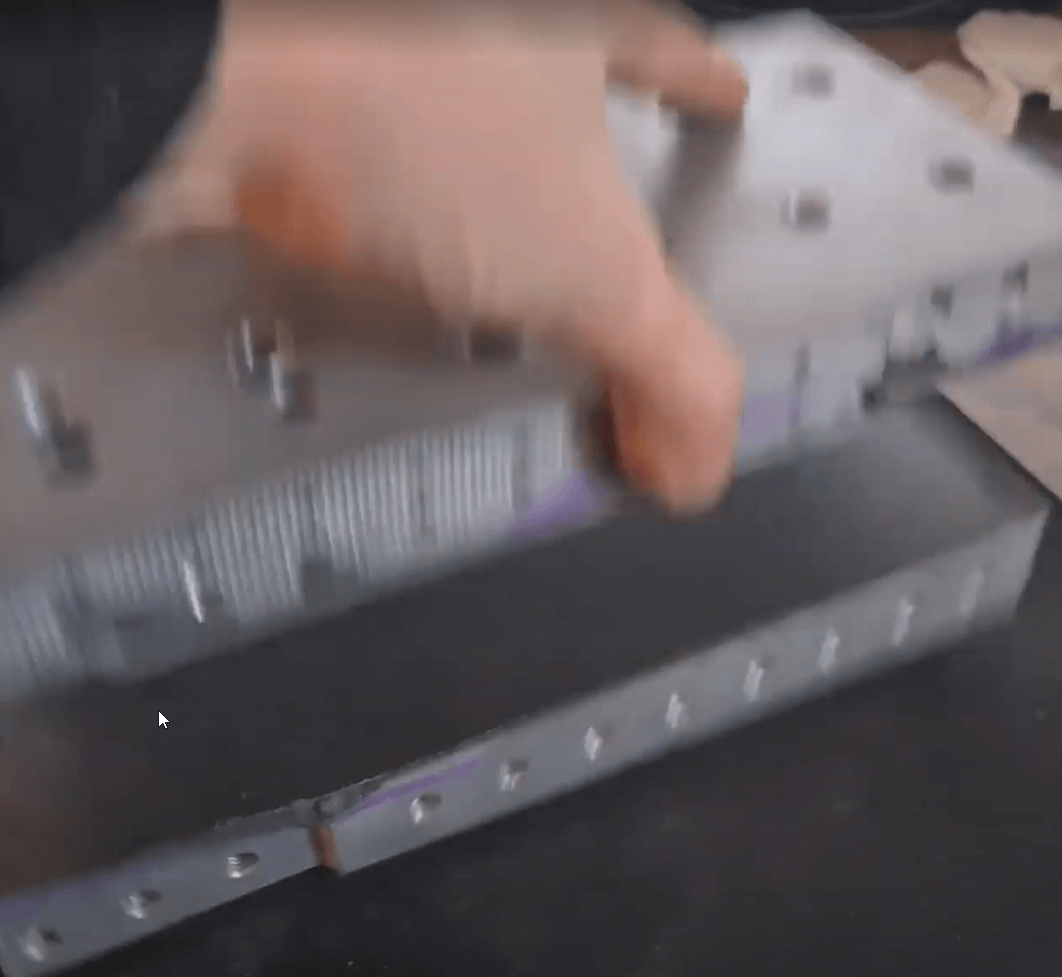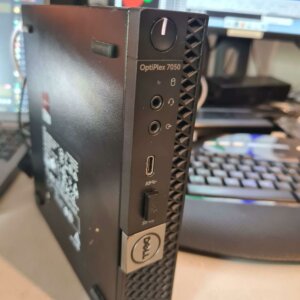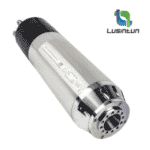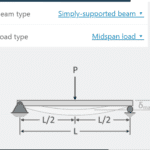Don't worry, We do not spam! By clicking to subscribe, you agree to our privacy policy.
Creating an Exact Match: Exploring the Replication Method for Accurate Surface Copies

Introduction
The replication method is a widely used technique in manufacturing and metrology to obtain accurate copies of a surface. The method involves replicating the surface of a reference material onto a workpiece using a medium such as metalized epoxy. This article provides an overview of the replication method, including its advantages, limitations, and applications.
Replication Method:
The replication method involves using a medium such as metalized epoxy to make a copy of the surface of a reference material, such as a granite surface plate to a workpiece. The surface to be replicated is first cleaned and coated with a thin layer of release agent, typically some kind of wax. The release agent is allowed to dry and is buffed to a shiny surface before the epoxy is applied. The epoxy is applied to the setup by pouring or injecting it into the setup and then allowed to cure. Once the epoxy is cured, it is peeled (or hammered) of the reference material, leaving behind an exact replica of the surface.
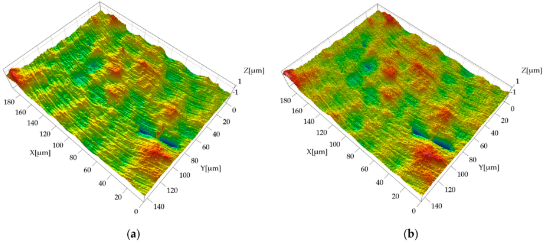
Advantages of the Replication Method:
One of the main advantages of the replication method is its ability to produce accurate copies of a surface. The method is also relatively easy to perform and requires only basic equipment and materials. Another advantage of the replication method is that it can be used to replicate surfaces of different shapes and sizes, making it suitable for a wide range of applications.
Limitations of the Replication Method:
While the replication method is generally accurate, it is important to note that it is subject to certain limitations. One limitation is that the replication method can only produce a replica of the surface that is in contact with the reference material. If the reference material has any defects or irregularities, these will be replicated onto the workpiece.
Applications of Replication Method:
The replication method is widely used in metrology to produce accurate copies of surfaces for measurement purposes. It is also used in manufacturing to replicate surfaces for quality control and inspection. Additionally, the replication method can be used in the restoration of damaged surfaces, such as those found on antique furniture or architectural features.
Resources:
Academia:
There is a book from the 80’s or 90’s by a professor of a US university who writes about the surfaces replication method, and how they used it to make a giant 5 axis grinder… I just cant find it at this moment…
Ah, here it is!
Principles of Rapid Machine Design – MIT – Eberhard Bamberg:
At-scale use of the replication method for big cnc machines – Rampf group:
Replication techniques and portable machining in machine tool rebuilding – Molglice:
http://www.moglice.com/articles/replication_techniques/wrotethebook.html
PRECISION the easy way, making CNC parts too big for a hobby mill – @floweringelbow:
DIY experiment:
With most DIY builds the most difficult part is creating flat mounting surfaces for your carriages and rails. In my Mightymill build, I have the same challenges.
Creating precision surface copies using metalized epoxy
Total Time: 9 hours
Prepare your workpiece
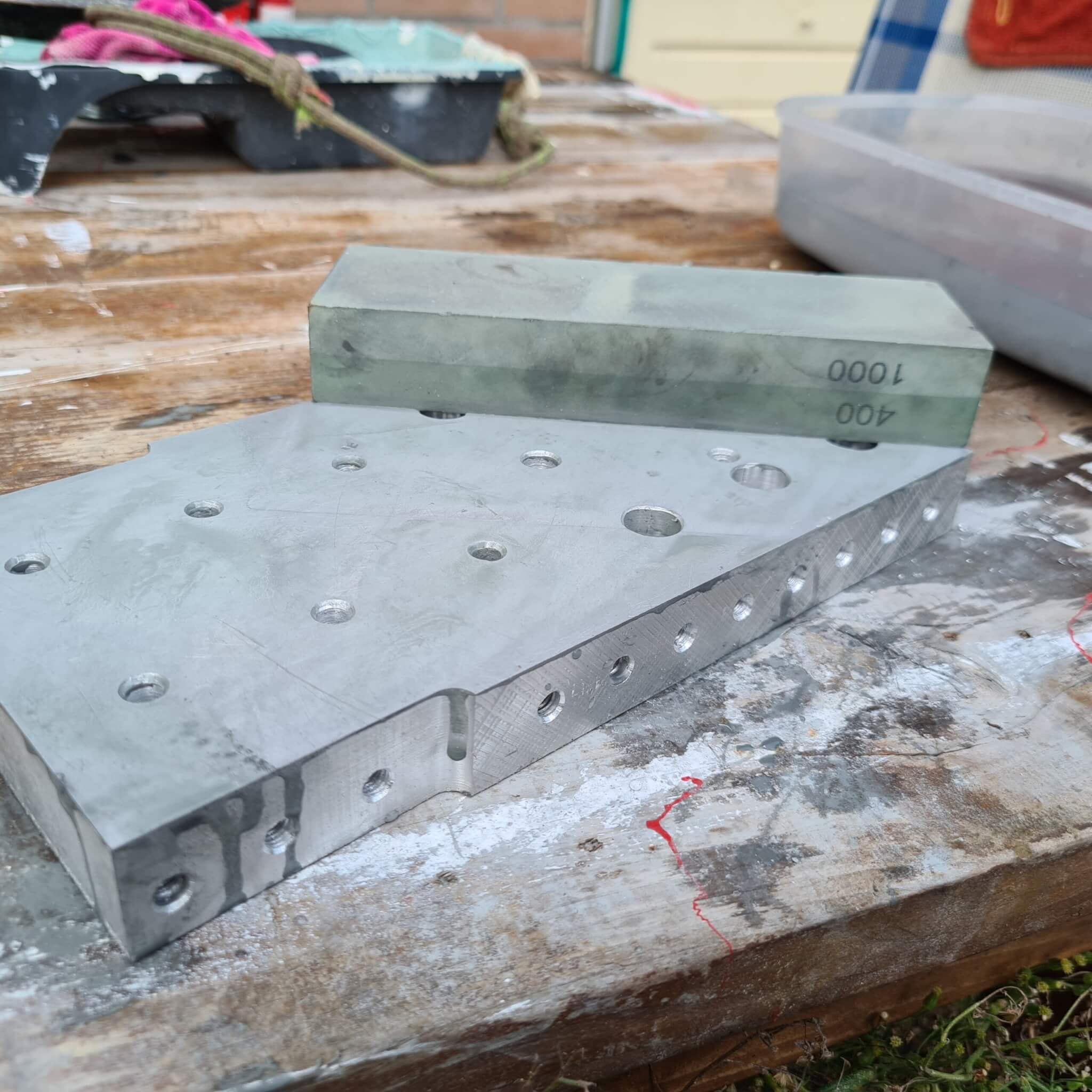
Make sure it is free of oil, and has a decent amount of surface roughness for the epoxy to adhere to.
Prepare the reference surface
I used Miracle wax no.8 as a release agent. Follow the manufacturer’s instructions (I did 3 coats) with buffing in between. I used a 40$ <2um error small granite surface plate.
Prepare the metalized epoxy
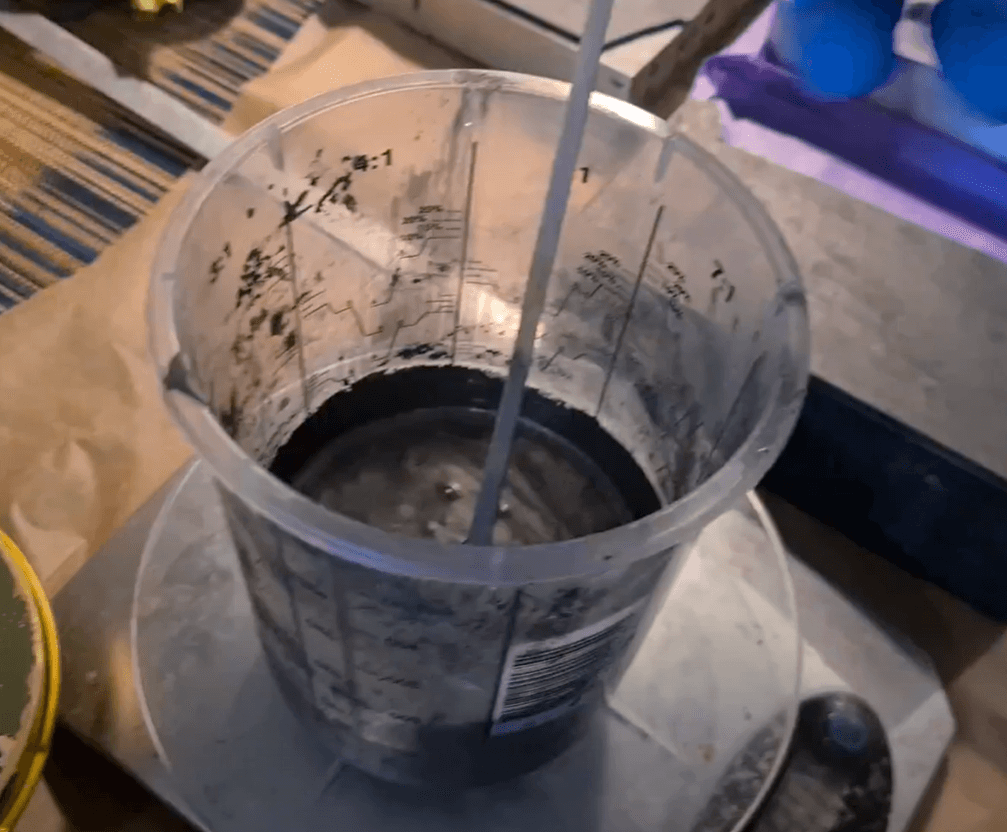
I used West epoxy 105 + 206 hardner, although I’d think 209 might even work better. I did a 50/50 mix of epoxy + iron powder (<63um particle size).
Tape off your part

Note: I used a 3-4mm thick parallel to regulate the thickness of my epoxy layer.
Pour the epoxy

Make sure you remove all air and have proper coverage. This is actually the most difficult part
Let the epoxy cure
I think I let mine set for about 12 hours
Remove from the reference surface and inspect

Any overflowing epoxy you can just hit off with a hammer or grind it away with a die grinder. The initial surface is quite rough due to the remaining release agent on there and any defects of your reference material.
Optimize the surface roughness and flatness
You can use either something like a 123 block + abrasive, a “kitchen” flattening stone, or any other relatively flat material. I used some dishwashing soap + the above-mentioned iron powder to basically do a lapping operation to the surface.
After about 3 – 5 minutes of lapping the surface should be smooth with most of the high sports removed.
Inspect and repeat

There are various ways to inspect surface flatness. I used a Mitutoyo indicator, a 123 block, and a high-precision HGW20CC block as my reference.
The initial flatness before the optimization stage was about 8um over the whole surface. After a cycle of 1-3 times of optimizing and inspection, it is <= 2um. Which equals my reference material. Lapping becomes challenging because the materials just want to stick together. The main issue at this point is that this is extremely difficult to measure.
As you are at or nearing the requirement of lab-based CMMS or optical measurement methods.
You could make this perfectly flat by doing this to 3 surfaces and using the Withworth 3 plate method.
Does it pull a vacuum?
Estimated Cost: 5 USD
Supply:
- Slow cure no shrink epoxy such as West 105 + 206
- Iron powder <63um particle size
- Tape
Tools:
- 123 block
Materials: Workpiece Reference material Mold release wax
Conclusion:
The replication method is a simple yet effective technique for producing accurate copies of surfaces. While it has certain limitations, it is a valuable tool in metrology, manufacturing, and restoration. It allows a hobbyist or a professional to make micron-to-sub-micron accurate copies of reference surfaces. And thereby able to create flat surfaces for DIY CNC machines or metrology equipment at a relatively low cost and low effort.

